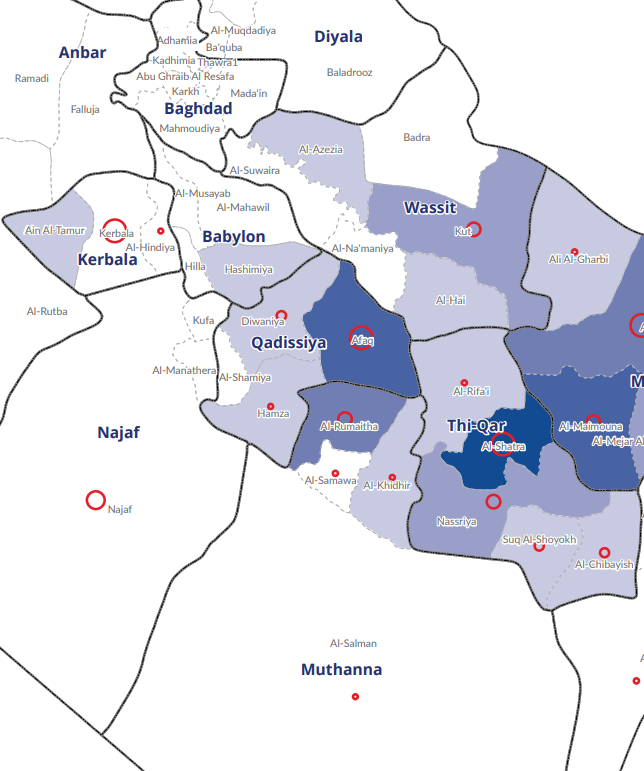Climate Reports
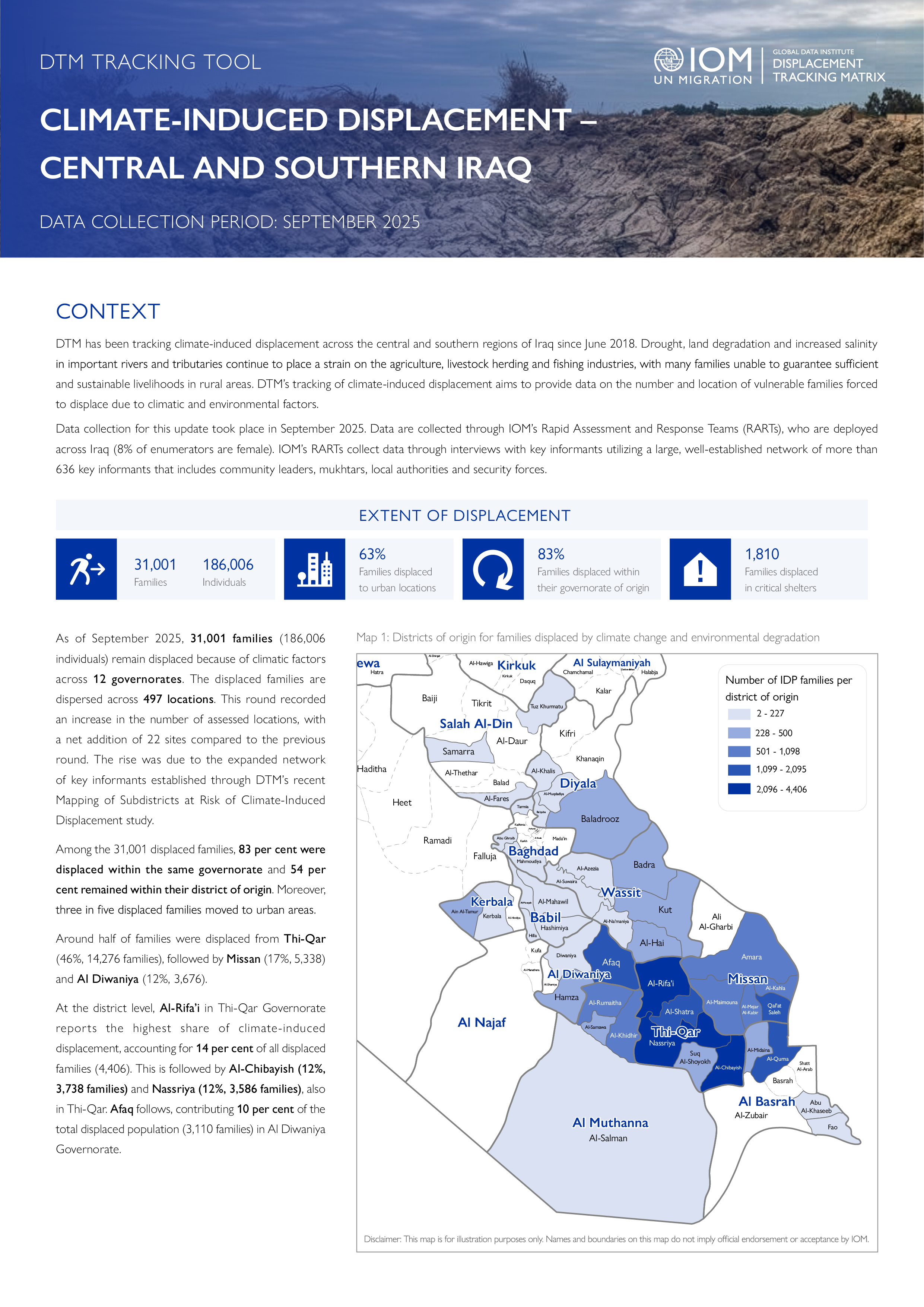
CLIMATE-INDUCED DISPLACEMENT – CENTRAL AND SOUTHERN IRAQ
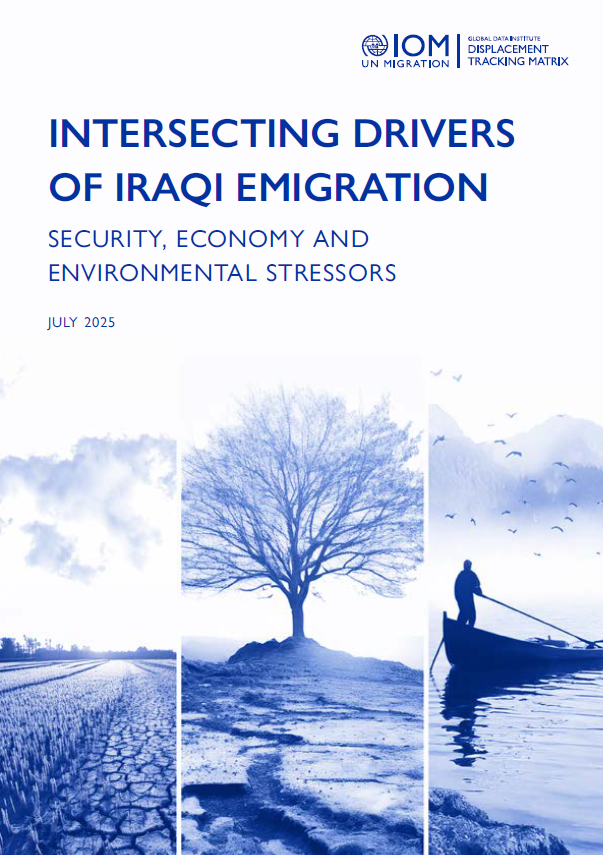
INTERSECTING DRIVERS OF IRAQI EMIGRATION
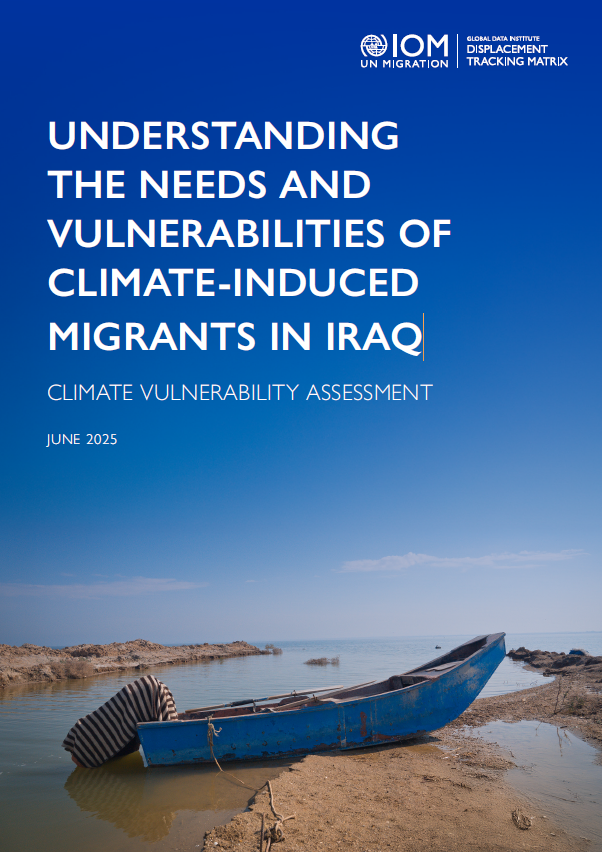
CLIMATE VULNERABILITY ASSESSMENT
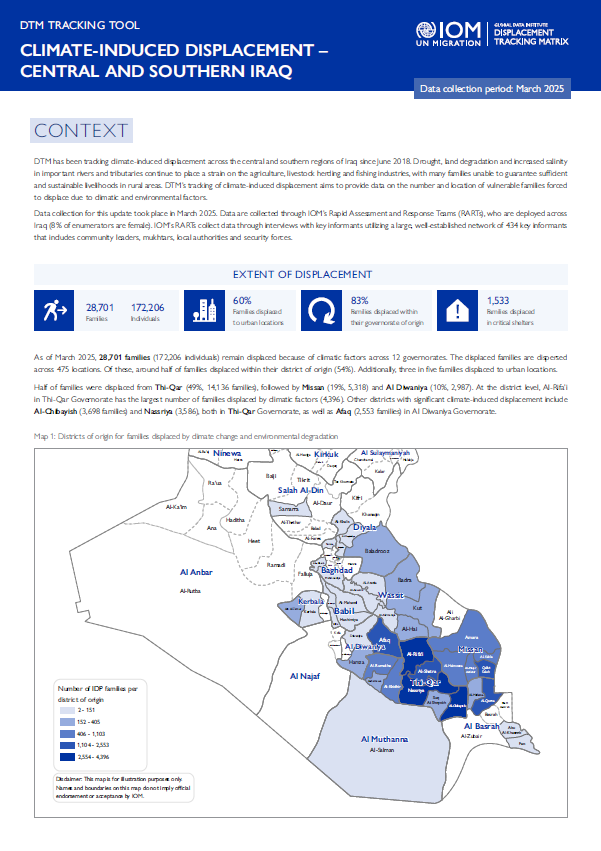
CLIMATE-INDUCED DISPLACEMENT – CENTRAL AND SOUTHERN IRAQ
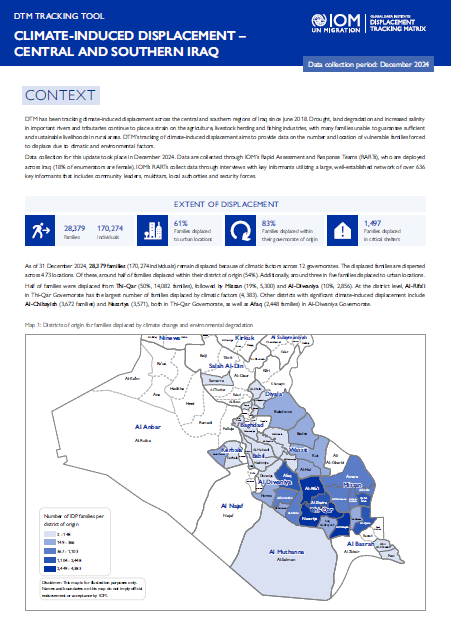
CLIMATE-INDUCED DISPLACEMENT – CENTRAL AND SOUTHERN IRAQ
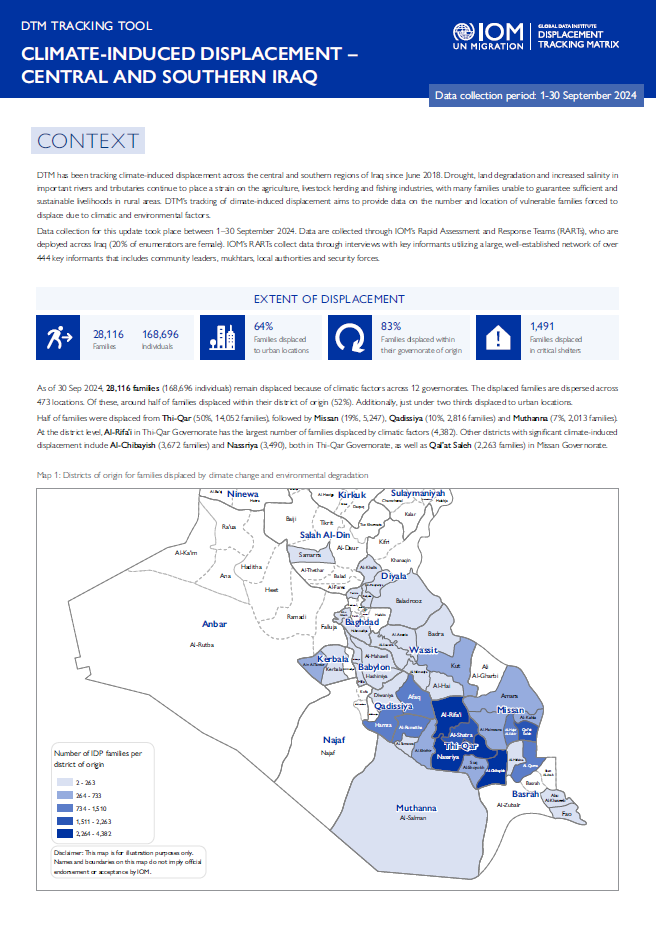
Climate-Induced Displacement - Central and Southern Iraq
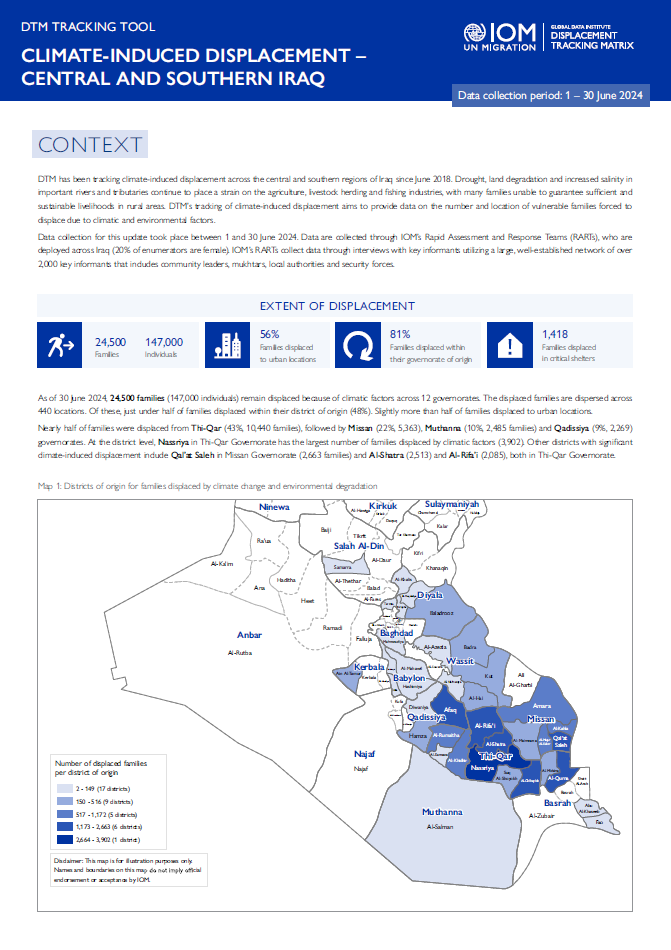
CLIMATE-INDUCED DISPLACEMENT – CENTRAL AND SOUTHERN IRAQ
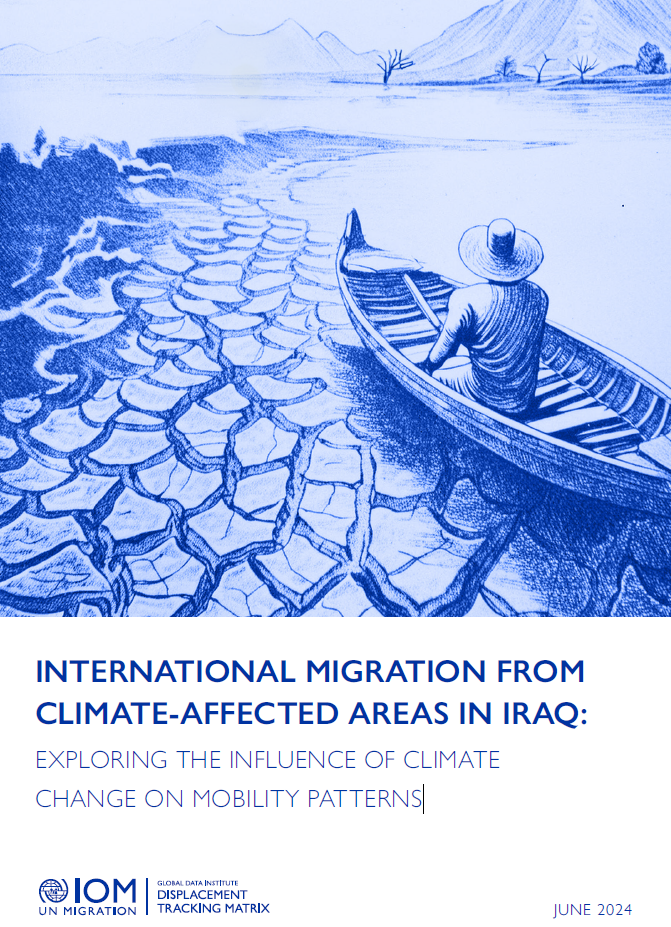
INTERNATIONAL MIGRATION FROM CLIMATE-AFFECTED AREAS IN IRAQ
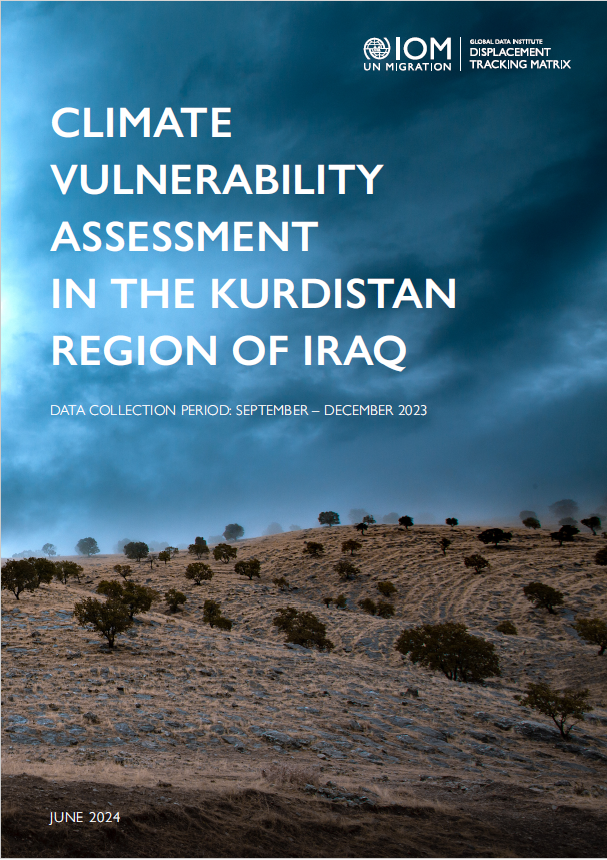
CLIMATE VULNERABILITY ASSESSMENT IN THE KURDISTAN REGION OF IRAQ
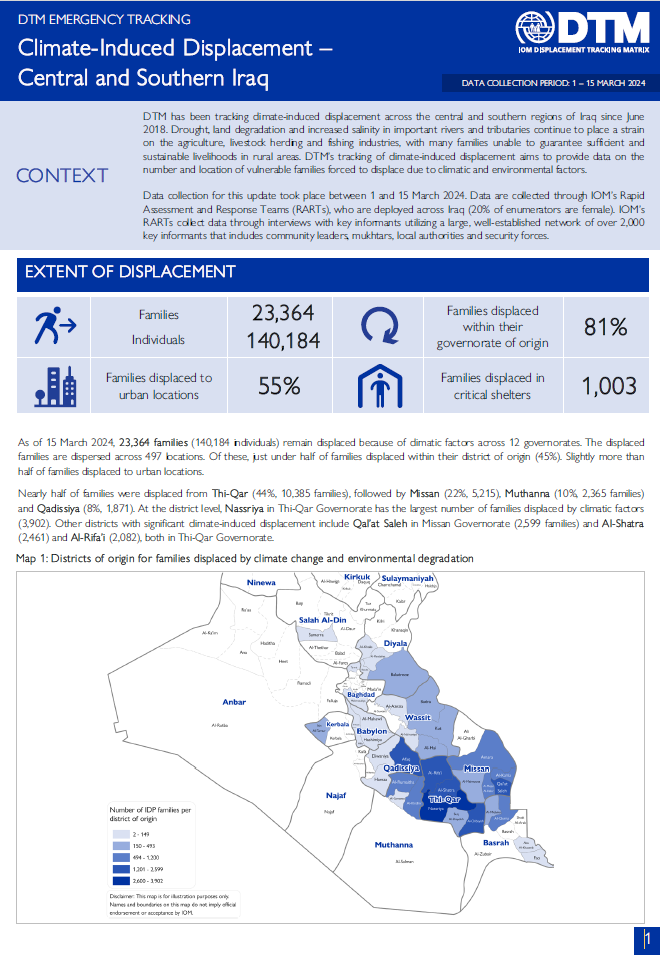
Climate-Induced Displacement - Central and Southern Iraq
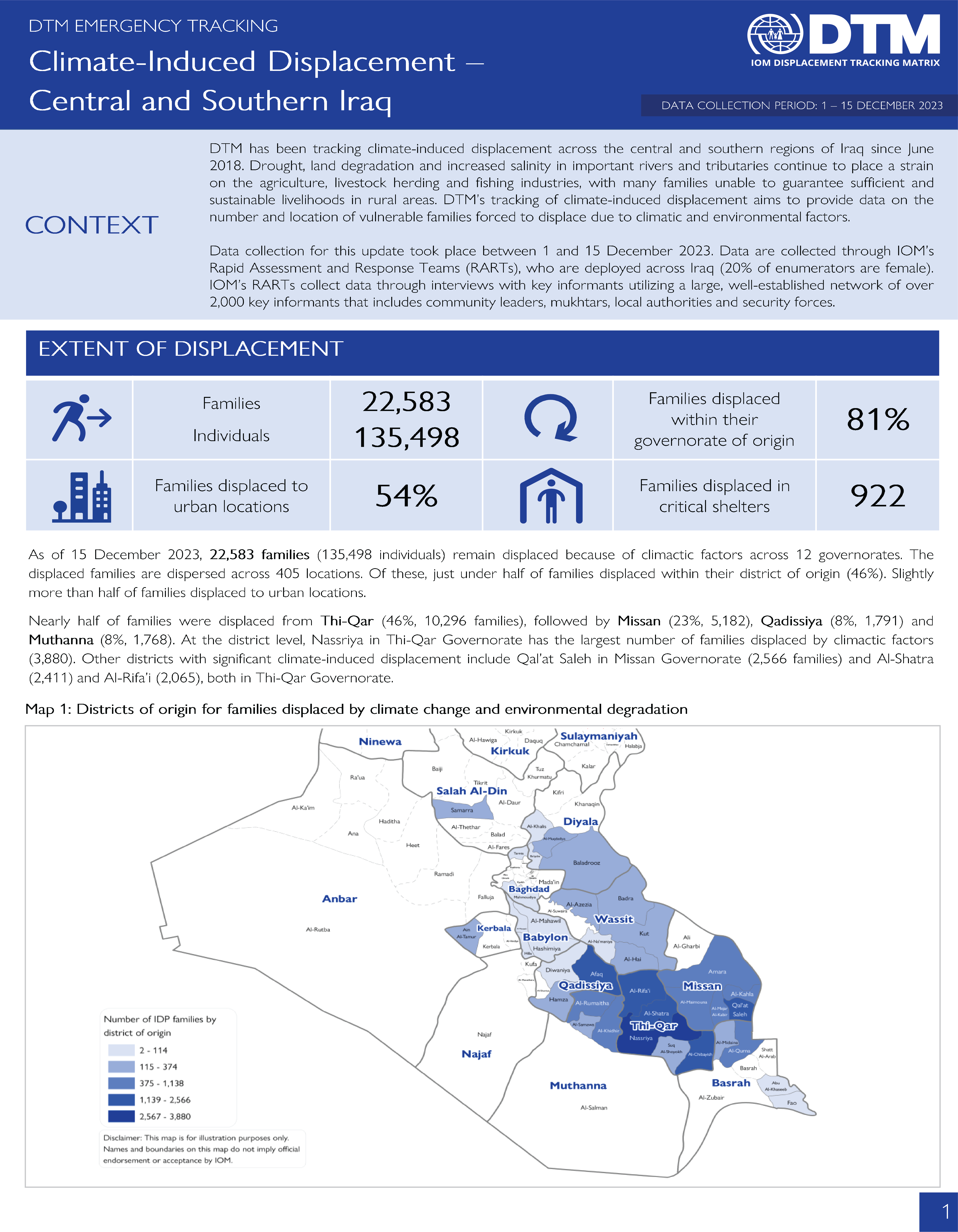
Climate-Induced Displacement - Central and Southern Iraq
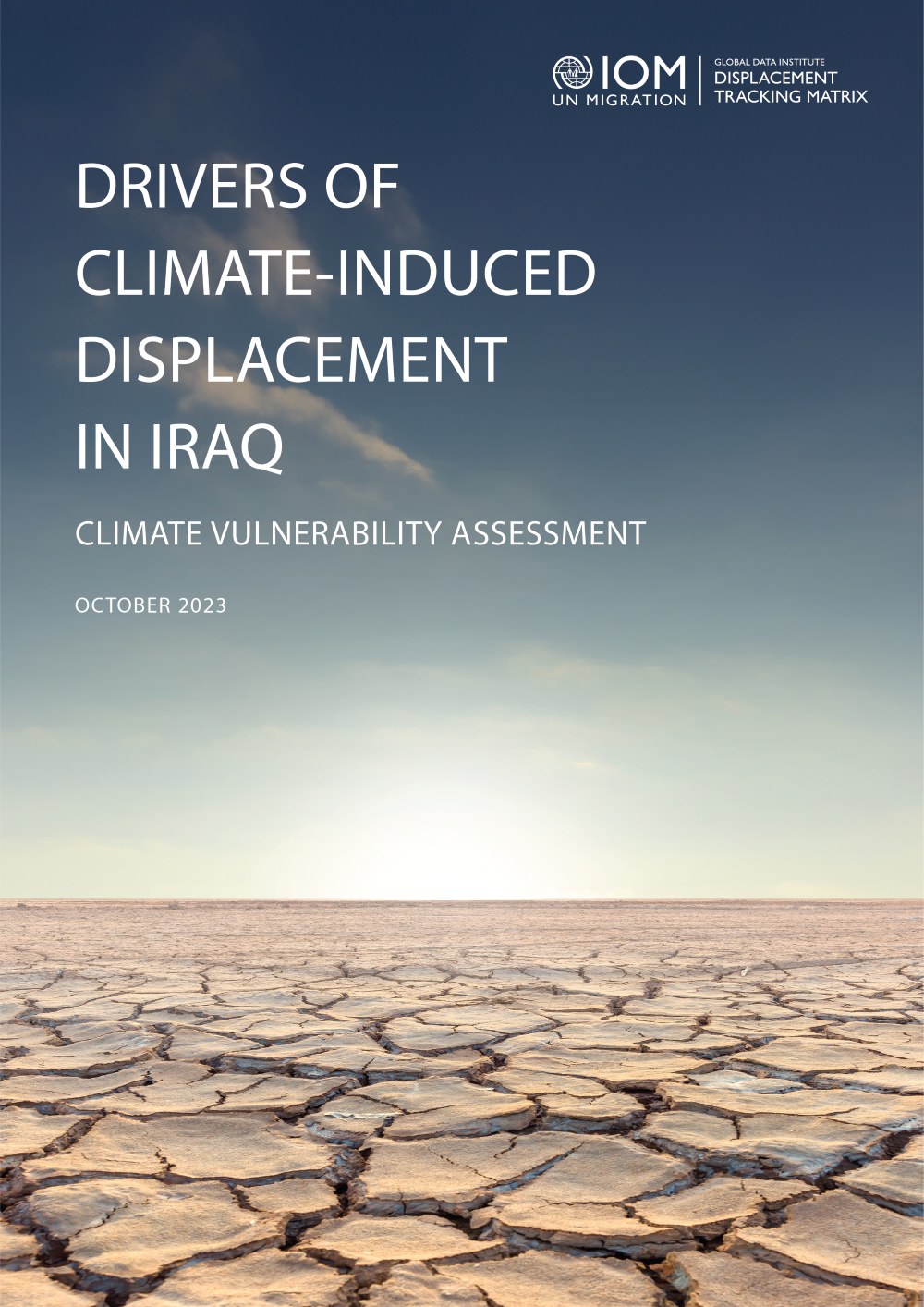
CLIMATE VULNERABILITY ASSESSMENT

Climate-Induced Displacement - Central and Southern Iraq

Climate-Induced Displacement - Central and Southern Iraq

BETWEEN FRAGILITY AND RESILIENCE

Climate Vulnerability Assessment Key Findings

EMPLOYMENT IN THE SOUTH OF IRAQ CHALLENGING PROSPECTS FOR WOMEN AND YOUTH
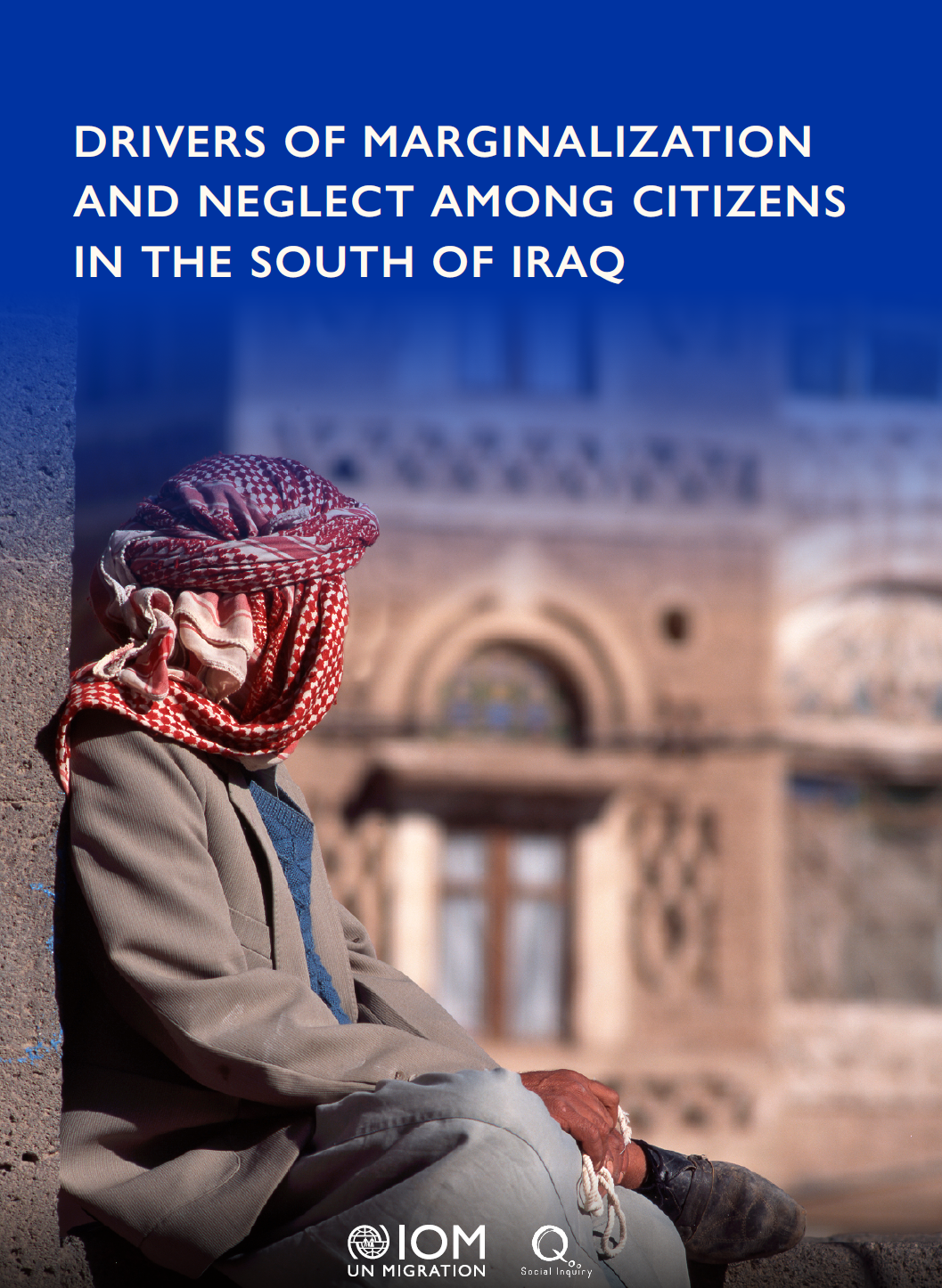
DRIVERS OF MARGINALIZATION AND NEGLECT AMONG CITIZENS IN THE SOUTH OF IRAQ
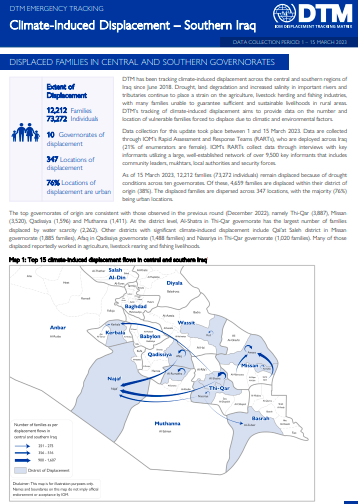
Climate-Induced Displacement - Central and Southern Iraq
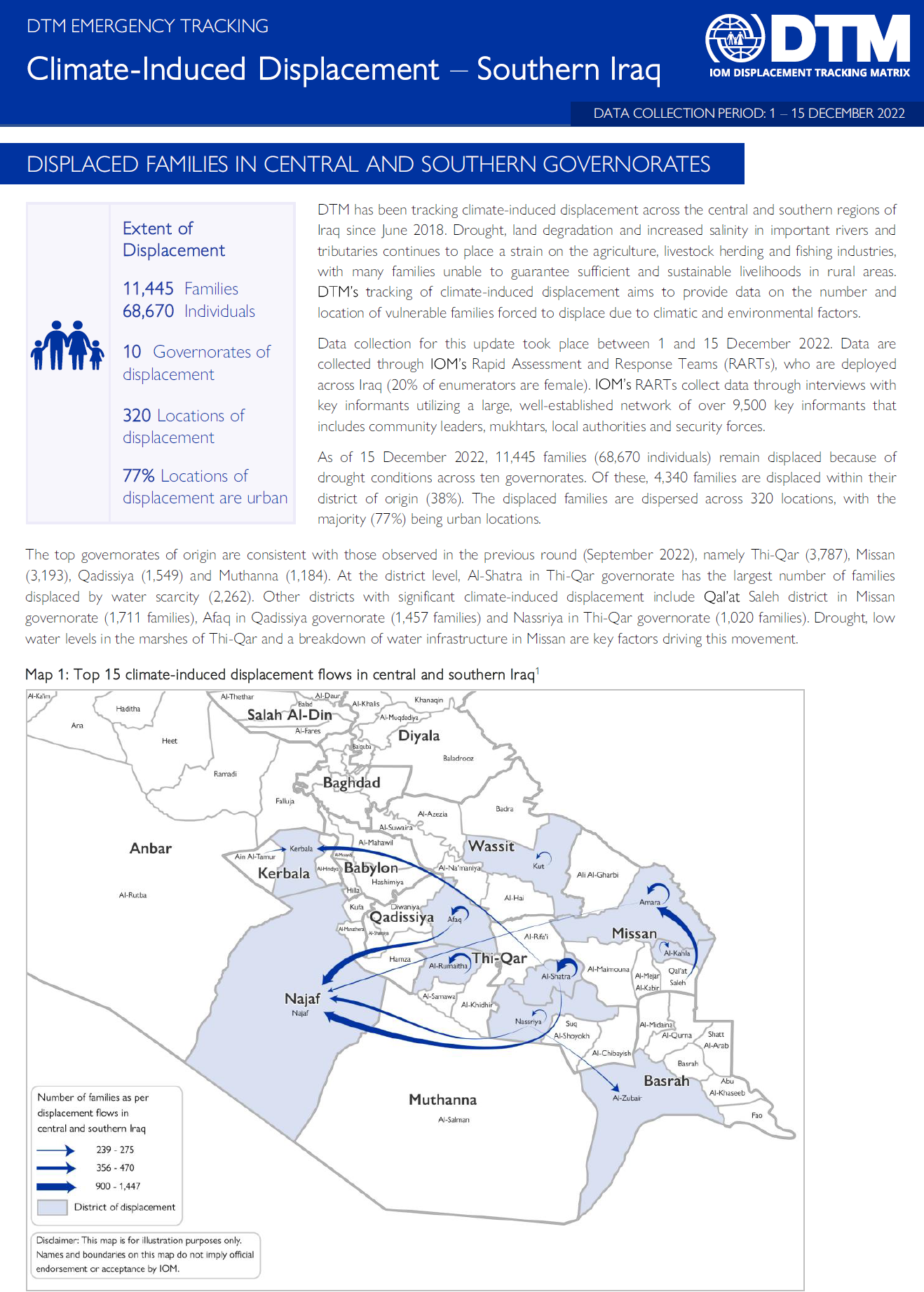
Climate-Induced Displacement - Central and Southern Iraq
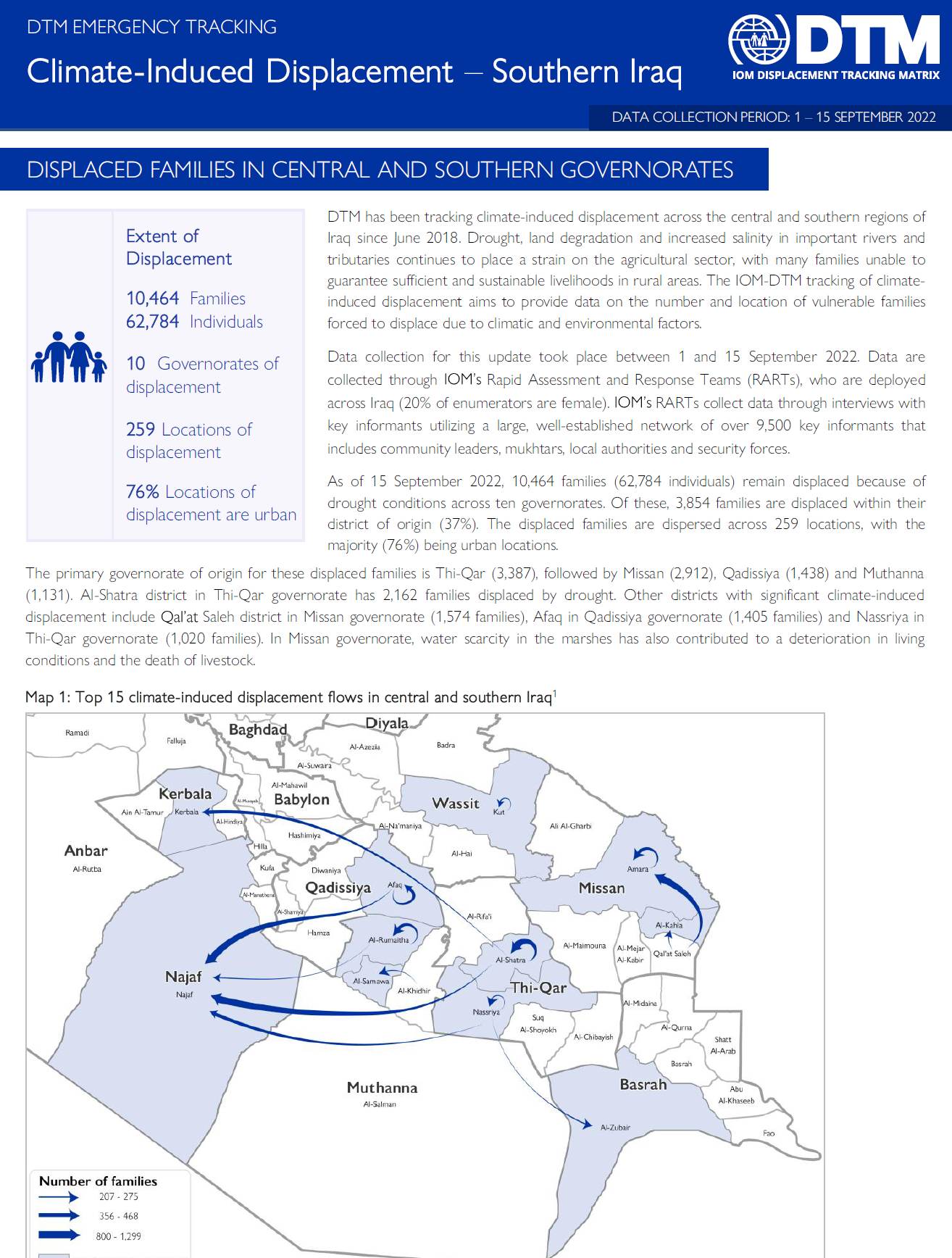
Climate-Induced Displacement - Central and Southern Iraq

FACTSHEET: THE IMPACT OF CLIMATE CHANGE
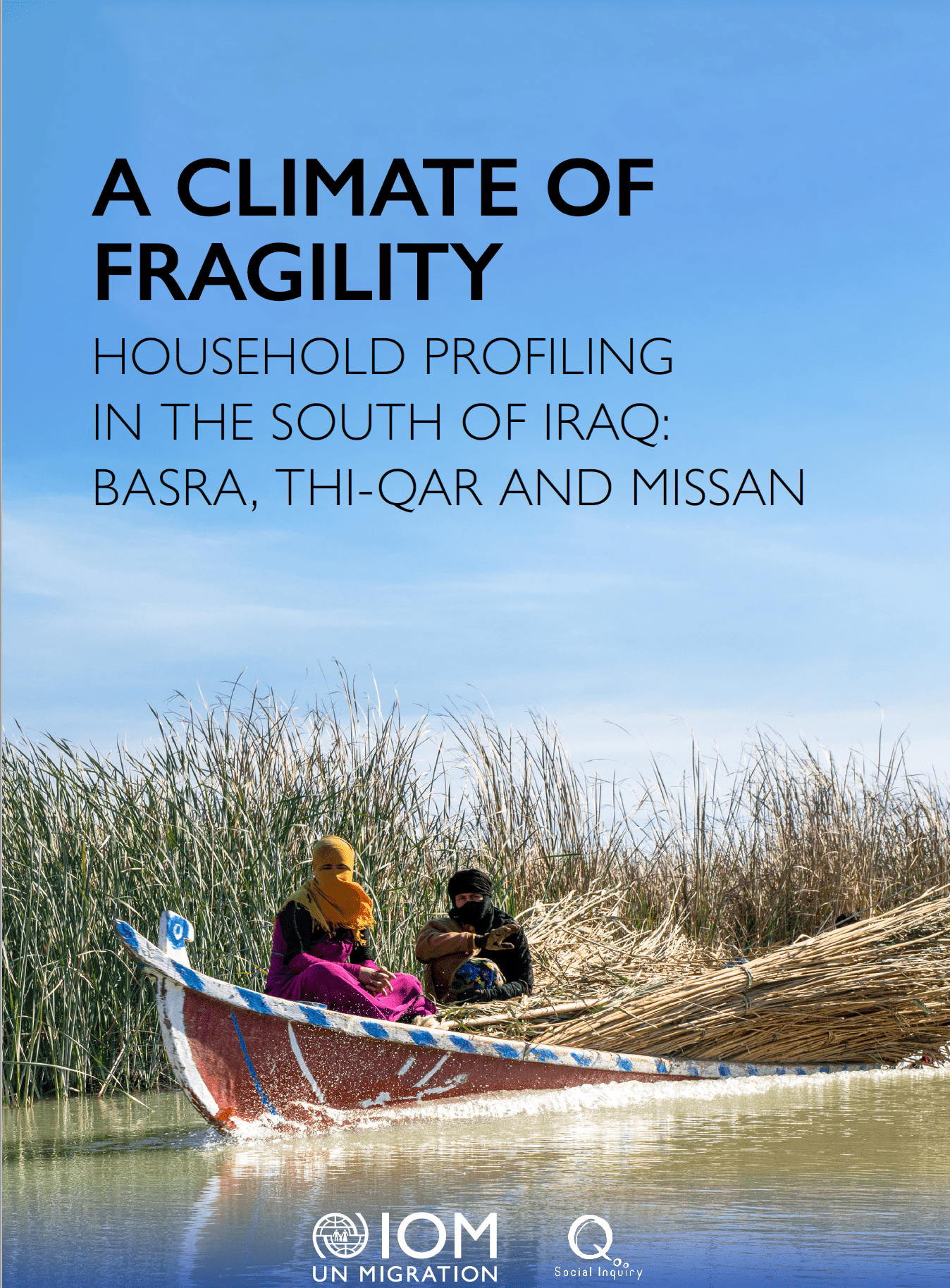
A CLIMATE OF FRAGILITY
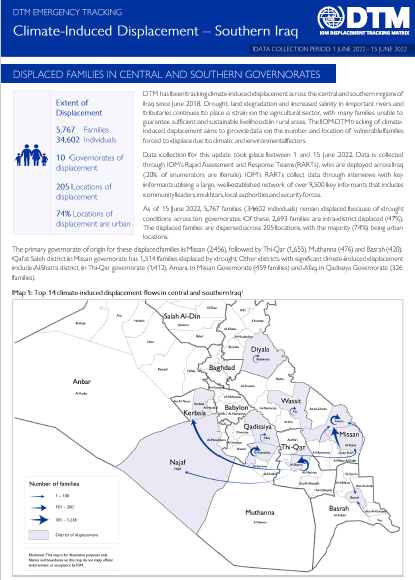
Climate-Induced Displacement - Central and Southern Iraq

Climate-Induced Displacement - Central and Southern Iraq

Climate-Induced Displacement - Ninewa
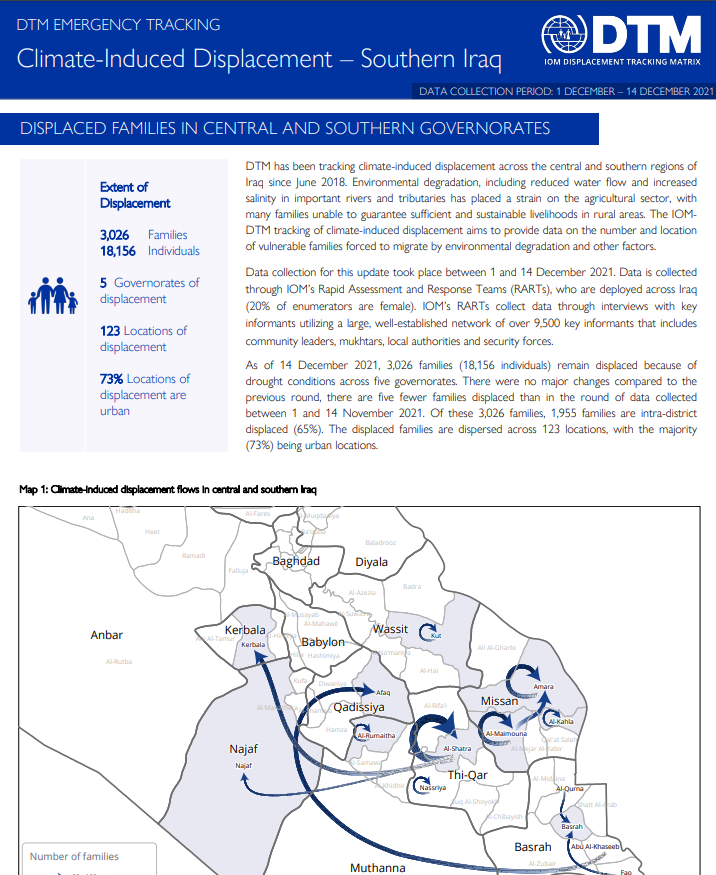
Climate-Induced Displacement - Central and Southern Iraq
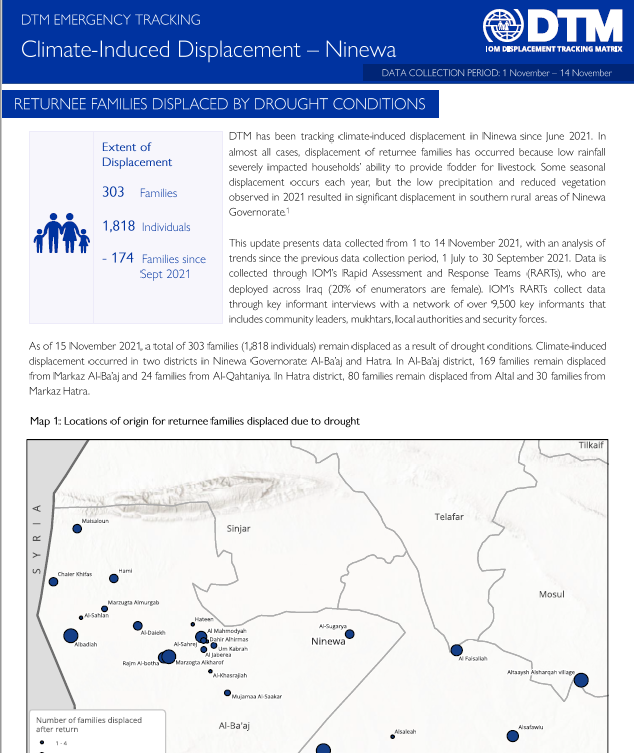
Climate-Induced Displacement - Ninewa
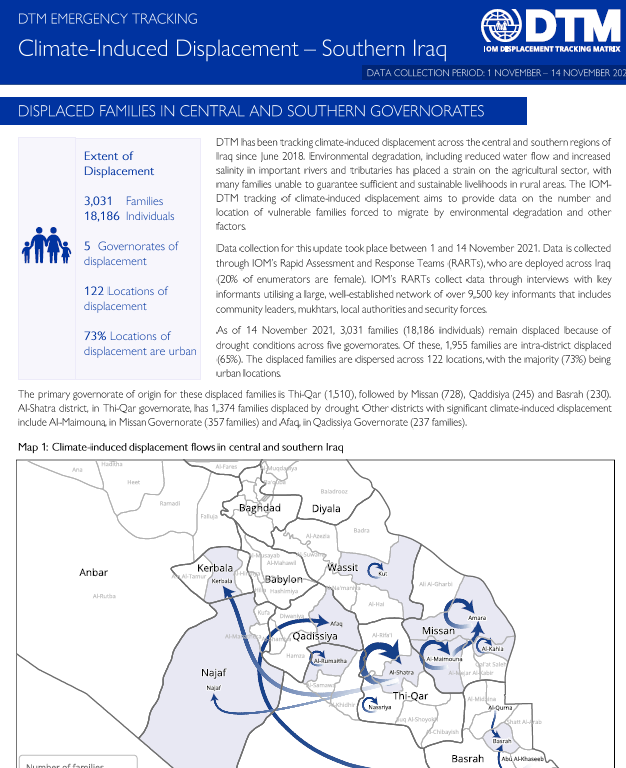
Climate-Induced Displacement - Central and Southern Iraq

MIGRATION INTO A FRAGILE SETTING | BASRA, IRAQ
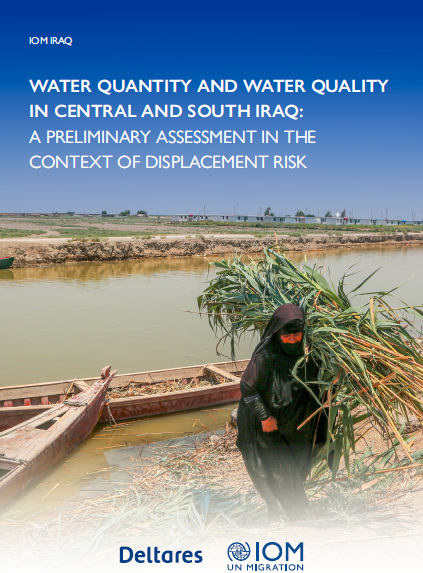
WATER QUANTITY AND WATER QUALITY IN CENTRAL AND SOUTH IRAQ

Assessing Water Shortage-Induced Displacement in Central Iraq

Assessing Water Shortage-Induced Displacement in Southern Iraq
Drought Maps
Due to the drought crisis in Iraq, DTM launched an emergency tracking tool in mid-2018. The data is collected continuously and reported monthly. Data collection is carried out in locations identified as affected by water scarcity, where individuals have been forced to flee or to leave their homes as a result of, or in order to avoid the effects of the drought. DTM collects this data across eight governorates (Qadissiya, Najaf, Wassit, Kerbala, Missan, Muthanna, Thi-qar and Basra). The unit of analysis of this assessment is the location; data is collected on the number of individuals displaced due to the drought at the governorate, district and location level.
Data is collected through IOM’s Rapid Assessment and Response Teams (RARTs), composed of over 100 staff members deployed across Iraq (20% of enumerators are female). IOM’s RARTs collect data through interviews with key informants utilizing a large, well-established network of over 9,500 key informants that includes community leaders, mukhtars, local authorities and security forces.
